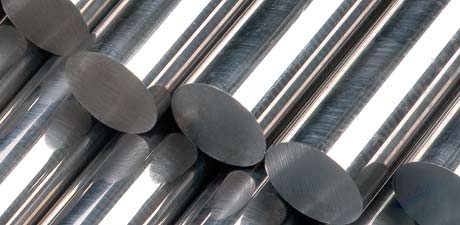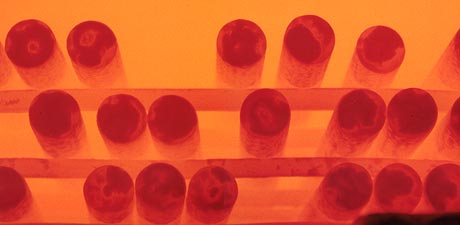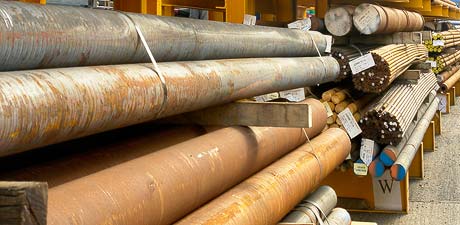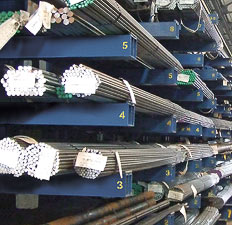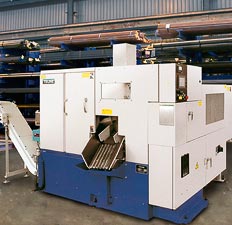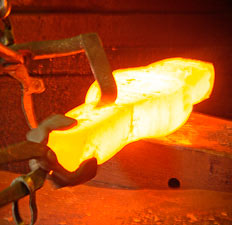Technical Data
Metallurgical Terms
I.
Chemical symbol for iodine.
Image Analysing Computer.
An instrument which, by means of a television scanning system, measures the area, size and number of inclusions, or other phases, in a metal sample. The information is fed into a computer and then displayed or recorded. In this way the cleanness of steel, for example, can be rapidly and accurately assessed.
Impact Test.
A test to determine the resistance of a material to a suddenly applied stress, i.e., shock. A notched test piece is normally employed and the testing machines in general use are the Izod and Charpy. The resistance is usually reported as the energy in ftlb or J. required to fracture or bend the test piece.
In.
Chemical symbol for indium.
Inclusion Count.
A method of assessing the number and size of non-metallic inclusions. Several methods are in use such as Fox, Jernkontoret and ASTM. The methods depend on microscopical examination of selected areas and comparing with standard charts or estimating areas. It is usual to take into account the type of inclusion as well as its size.
Inclusions.
Usually non-metallic particles contained in metal. In steel inclusions are reported as one of the following types:
– Aluminate
– Silicate
– Sulphide
– Globular Oxide
By causing local stress concentrations inclusions can cause a reduction in ductility and fatigue strength, or if large, a reduction in tensile strength.
Induction Hardening.
A process of hardening steel by heating it, by means of an alternative magnetic field, to a temperature within or above the transformation range, followed immediately by quenching. This process may be applied to both surface hardening and full hardening.
Ingot.
A mass of metal cast into a mould. It differs from a casting in that it has to be rolled or forged to be made usable.
Ingot Iron.
Iron of comparatively high purity, produced in the same way as steel, under conditions that keep down the carbon, manganese and silicon content, e.g. Armco Iron, Melting Base Iron.
Ingot Mould.
Primarily, the function of an ingot mould is to provide a receptacle for the molten steel, which shall, after freezing, be in a form suitable for subsequent working. Moulds are generally of cast iron.


